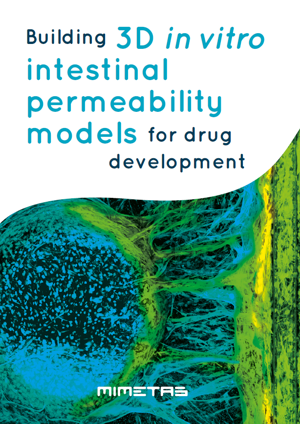Building 3D in vitro intestinal permeability models for drug development

Understanding intestinal permeability is a critical step in evaluating drug absorption, bioavailability, and safety. This eBook provides a comprehensive guide to building physiologically relevant 3D in vitro intestinal models using Organ-on-a-Chip technology.Drawing from real-world examples and validated protocols, it outlines:The biological relevance of 3D intestinal models compared to conventional 2D systemsHow to mimic in vivo-like architecture and function using perfused microfluidic platformsMethods to assess drug transport, barrier integrity, and compound-induced toxicityKey considerations for model setup, culture conditions, and experimental readoutsThe content is especially useful for scientists and researchers working in preclinical drug development, ADME-Tox, and translational biology. Whether you're optimizing compound screening workflows or replacing animal models, this resource supports more predictive and human-relevant data generation.
Building 3D in vitro intestinal permeability models for drug development

Building 3D in vitro intestinal permeability models for drug development
The eBook explains how to develop 3D in vitro intestinal permeability models using Organ-on-a-Chip technology, with a focus on applications in drug absorption and transport studies.

Building 3D in vitro intestinal permeability models for drug development
The eBook explains how to develop 3D in vitro intestinal permeability models using Organ-on-a-Chip technology, with a focus on applications in drug absorption and transport studies.

Building 3D in vitro intestinal permeability models for drug development
The eBook explains how to develop 3D in vitro intestinal permeability models using Organ-on-a-Chip technology, with a focus on applications in drug absorption and transport studies.

Building 3D in vitro intestinal permeability models for drug development
The eBook explains how to develop 3D in vitro intestinal permeability models using Organ-on-a-Chip technology, with a focus on applications in drug absorption and transport studies.

Building 3D in vitro intestinal permeability models for drug development
The eBook explains how to develop 3D in vitro intestinal permeability models using Organ-on-a-Chip technology, with a focus on applications in drug absorption and transport studies.

Building 3D in vitro intestinal permeability models for drug development
The eBook explains how to develop 3D in vitro intestinal permeability models using Organ-on-a-Chip technology, with a focus on applications in drug absorption and transport studies.

Building 3D in vitro intestinal permeability models for drug development
The eBook explains how to develop 3D in vitro intestinal permeability models using Organ-on-a-Chip technology, with a focus on applications in drug absorption and transport studies.

Building 3D in vitro intestinal permeability models for drug development
The eBook explains how to develop 3D in vitro intestinal permeability models using Organ-on-a-Chip technology, with a focus on applications in drug absorption and transport studies.

